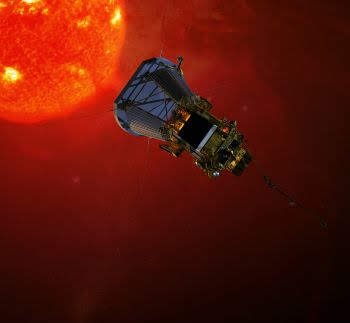Suns' Seven Year Journey, Parker Solar Probe Update
Top Picture Credits: NASA
Credits: Parker Solar Space Probe
A Look Into Our Sun's "Parker Solar Space Probe Mission"
In August 2018, the space probe was launched and began a seven-year mission to analyze the sun's composition. "The Parker Solar Space Probe," Designed by Dr. Parker and the John Hopkins University, built the fastest spacecraft to travel in space for this mission. Its mission is remotely controlling certain aspects of the probe's internal controls.
The Parker Solar Space Probe, NASA's fastest spacecraft, reached top speeds, recorded, and reached speeds up to 394,736 mph (635,266 km/h,) the fastest ever.
These speeds were recorded on September 27, 2023, by NASA. It has come a distance of 4 million miles away from the sun's surface. To get closer and reach speeds up to it uses a nearby planet, Venus, gravitational pull to slingshot itself around Venus to hit these record speeds.
These flybys of planet Venus play a crucial elemental role in the probe's mission to analyze our sun's scorching corona and surface.
The Parker Solar Probe has one more scheduled flyby: its closest approach to the sun in late 2024. And it's predicted to come just 3.83 million miles (6.16 million km) from the surface.
The probe is the fastest to be constructed by man, but it's likely to reach even higher and greater speeds on its final trip around the sun. It's firmly establishing its reputation by this mission.
The Parker Solar Probe is the first space probe to get this close to our sun's surface or outermost layer of the sun's atmosphere to understand its composition.
The science of this mission will bring a better understanding of how heat moves through the corona and how plasma fields and magnetic fields change on our sun's surface.
Finally, how that powers phenomena such as solar winds will help our scientists better predict space weather, says NASA.
Written by,
William Darnell Sr
October 14, 2023







